This jewel earned a reputation for its demanding design and consistently fine condition as soon as it opened for play. Eight years and that image hasn't changed.
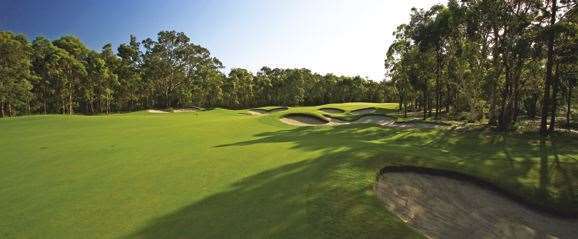
Superficially, it’s easy to label Pacific Dunes Golf Club as a Jekyll-and-Hyde layout, except that Robert Louis Stevenson’s famous character at least offered a gentler side to contrast its sinister alter ego. While Pacific Dunes might be a golf course of two distinct halves, neither side offers any relief. There is little point attempting to survive one tough nine in the hope of scoring well on the more vulnerable second side. Yet the course’s split personality makes for a compelling reason to do battle with this multi-faceted layout.
The front nine is tight and bordered by thick trees or bush on both sides of most holes whereas the back nine is much more open with water in play for almost every full shot. This striking variation characterises Pacific Dunes and gives it a definite allure, which is important for a site with almost no elevation change.
But before you quiver with fear and begin searching elsewhere for a new place to play, remember that Pacific Dunes is a truly enjoyable golf course and absolutely playable from the blue tees. You just need all systems running and to keep your eyes peeled in order to score well. Course designer James Wilcher, who penned another tight and penal layout at The Cut, south of Perth, frequently tricks golfers into being mesmerised by the trouble. At times it appears there is sand, water or dense foliage intruding on every shot – and sometimes all three are – however, there is generally a safe option, too, yet one that might be masked by the inherent trouble that catches the eye.
The course gets your attention from the start. Based on scores made in member play, the 1st hole was recently re-rated from index-18 to a more accurate index of 9. That revision is a little on the generous side but as No.18 it was the toughest ‘easiest’ hole around. With water and trees left of the fairway and that same water cutting across the fairway in the driving zone then returning beside the putting surface, first-timers were prone to wonder what lay ahead when this was considered to be the least difficult hole on the course.

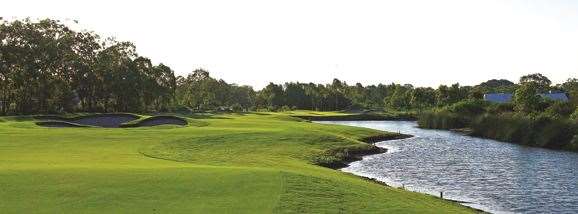
The rest of the front nine demands accuracy at every turn after the welcome handed out by the 1st hole. The scrubby bushland through which this side of the course is carved provides distinct corridors for play, although at ground level this shrubbery is not as dense as it appears from a distance, offering hope of retrieving stray balls and even the odd exhilarating escape shot. The two par-5s at the 4th and 6th become highly difficult propositions if either of your first two shots strays from the cut grass, especially at the 555-metre 6th. The 3rd is a potentially driveable par-4 for anyone game to try to carry the phalanx of cross bunkers spanning the fairway 230 to 240 metres from the back markers, but mostly the risk here outweighs any reward. The 9th is a sharp dogleg right of 403 metres where only a mammoth blow from the tee will carry the lone bunker positioned perfectly at the corner.
The back nine has arguably more character, given that it intertwines flora and water. And how wet is it? I contend only three full shots on the inward half – the tee shot on 14 and the second shots at 15 and 16 – are devoid of any threat of finding water.
The 10th and 11th holes, a short par-4 then a par-5, offer birdie chances if the wet stuff is avoided on each shot. The 482-metre 11th teases you standing on the tee. If you can fly a drive 250 metres from the back pegs or 232 from the blue markers, the small pond that eats into the right half of the fairway won’t be a factor. For the more cautious, though, two lay-ups and a pitch is the more prudent strategy, although veering too far left with the tee shot puts another water hazard in play. Even more water guards the entire right side of the par-4 13th hole and returns three holes later to flank the inside of the dogleg-left 16th, a 382-metre par-4 played from the course’s only elevated tee. This raised vista provides a full view of the hazards ahead and can lull long hitters in to biting off a chunk of the lake on the left to shorten the second shot. The green is still in reach for two for those who play safely to the right from the tee, although a pair of bunkers in front of the putting surface place greater demands on approaches struck from long range.
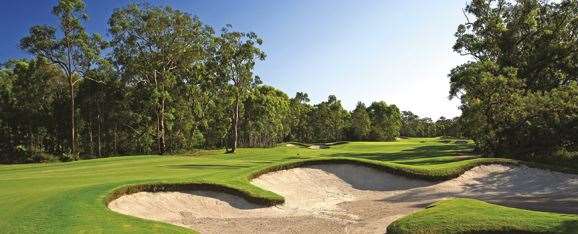
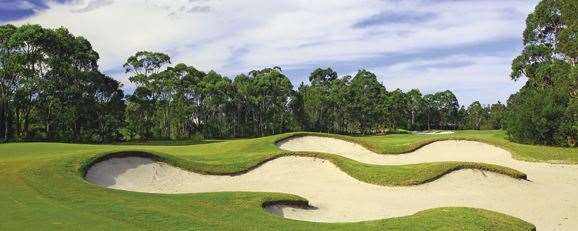
The long par-3 17th is a brute from the 222-metre back tee before temptation returns on the closing hole. At 486 metres, the 18th is one of those at-times infuriating par-5s where making a par seems so easy in hindsight after you’ve taken on more than your talent can handle and finished the round with an ugly number. From a tee set back among a grove of trees behind the 17th green, you fire a drive into a deceptively generous fairway with water along the right (that extends all the way to the green) and two bunkers, one to catch any drive struck too timidly up the left side and another further along in the centre of the fairway that will gobble up any weak second shots. Which means the green is only reachable in two blows if the drive is absolutely perfect. And even then, water fronting the large green needs to be carried in order to set up an eagle putt. Much like the 11th, this par-5 is usually best handled in three strategic strikes that avoid the various pitfalls scattered along the fairway.
When it opened, Pacific Dunes instantly became the best course in the immediate region, bolstering the Port Stephens golf scene and giving travelling golfers a genuine reason to make their stay longer than just a weekend. It’s an area that markets itself under the slogan “Closer than you think” and it is, indeed, a leisurely drive north from Sydney or a quick trip up the road from Newcastle.
Pacific Dunes is one of the few courses I’ve seen that was in genuinely great condition the day it opened – there was no settling in period required. Little has changed with the layout in the eight years since, largely because there was minimal need for change. A drainage concern that impacted the fairway on the par-4 7th hole was alleviated several years ago through the smart inclusion of a waste bunker. It is the only such area on the course but it is unlikely to see much play because of its location beyond the driving zone and well short of the green, and it adroitly solved a maintenance headache through design.
The only criticism I can really make of the course is the lack of a cheeky par-3 measuring 150 metres or shorter. The 14th hole is the shortest at 178 metres and all four par-3s will measure similar distances most days.
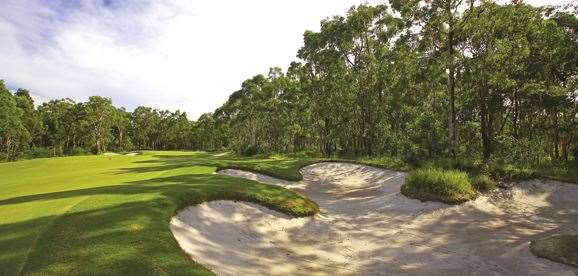

The club holds weekly open competitions each Wednesday (ladies), Saturday and Sunday, while the fourth Wednesday of each month is the Vets Advantage day, where you subtract your age from 100 to determine the green fee.
Additionally, the last Friday of each month is the Black Tee Challenge. The tee markers go right back, the flags are tucked, the winner receives a Titleist stand bag and any entrants who better their handicap receive a dozen Pro V1 balls. Come December, the 12 winners from the year are invited to return for the chance to win a grand prize golf package.
THE COURSE
LOCATION: Championship Drive, Medowie. Pacific Dunes is a two-hour drive north of the Sydney CBD via the F3 freeway and Pacific Highway.
CONTACT: (02) 4916 0500.
WEBSITE: www.pacificdunesgolf.com.au
DESIGNER: James Wilcher (2005).
PLAYING SURFACES: A1 bentgrass (greens), Santa Ana couch (fairways, tees and rough).
COURSE SUPERINTENDENT: Andrew Perrett.
PGA PROS: Kurt Linde and Joanne Mills.
GREEN FEES: $70 weekdays, $90 weekends (prices include cart). After 3pm twilight rates are $40 on weekdays and $45 on weekends.
THE CLUB
MEMBERSHIPS: Full membership is currently open and costs $1,600 per year with no joining fee. A country membership and annual country pass also exist for golfers living more than 100 kilometres away.
CORPORATE AND GROUP DAYS: Pacific Dunes’ corporate memberships come with a wide range of benefits, including four memberships (two nominees and two wildcards), fully catered golf day for 35 guests, unlimited golf with no green fees, preferred rates for functions/conference facilities and more.
ACCOMMODATION: The Anchorage Port Stephens at Corlette is an easy half-hour drive from Pacific Dunes. Phone (02) 4984 2555 or visit www.anchorageportstephens.com.au for more information.
PACKAGES: Social groups of 20 players or more receive a premium stand bag for the group to use as a prize. Valid from Monday to Thursday, the cost is $70 per player, which includes golf, cart use, complimentary practice balls and more.
Related Articles

Review: Omaha Beach Golf Club

Drinks With... Ricky Ponting

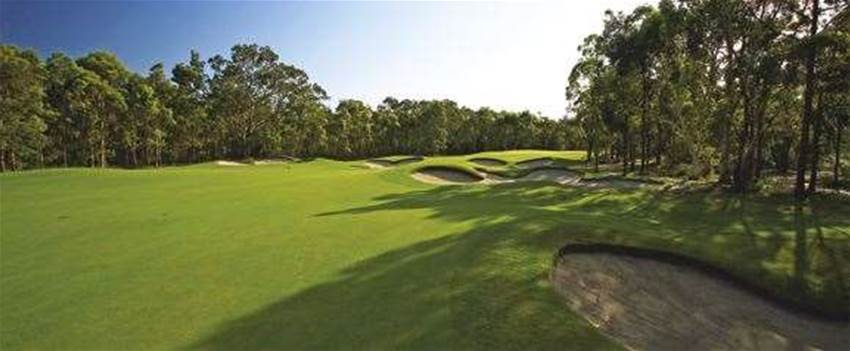






_15th_hole.jpg&h=115&w=225&c=1&s=1)




